Environmental Engineering Reference
In-Depth Information
FIGURE 5.14
Changes in the Willamette River related to channelization from 1850 to 1995
(A, image courtesy of Ashkenas, Gregory, and Minor, Oregon State University) and (B) snag
and tree removal (data from Seddel and Froggatt, 1984).
result if enough toxic sediment is resuspended (see Sidebar 14.1). Movement
of rocks on the bottom of the streams can also have direct ecological ef-
fects on the organisms on or under those rocks. On land, a rolling stone
gathers no moss; in a stream, a rolling stone will not gather much algae or
many invertebrates.
The movement of materials is also a key aspect of erosion. Very
small particles such as clays are less susceptible to erosion than slightly
larger particles (Fig. 5.17). Due to the relationship between particle size
and transport, gravel is often found in riffles and fine sediments are
deposited in pools. Under base flow, riffles are erosional habitats and
pools are depositional habitats. The retention and transport of particu-
late materials can be important in describing the long-term effects of sed-
iment pollution. For example, sediments that enter stream channels from



Search WWH ::

Custom Search